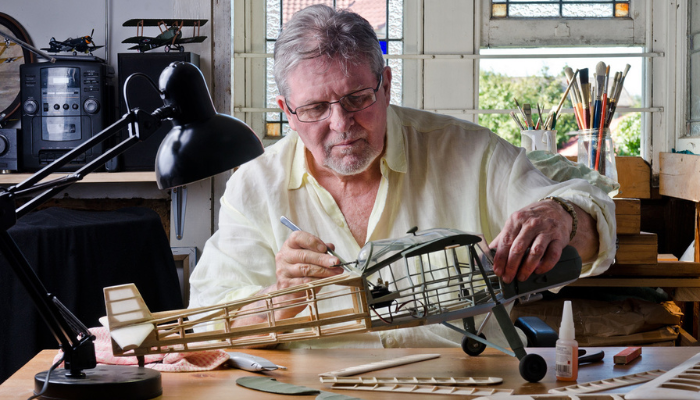
05 Mar Rediscovering Passion Through Model Building
There has been a noticeable resurgence in hobbies that require precision, patience, and a touch of nostalgia. Among these, model building has emerged as a particularly engaging pastime, especially for the baby boomer generation. This group, celebrated for their innovative spirit and eclectic pursuits, is embracing model building as a fulfilling hobby that offers layers of engagement beyond mere entertainment. It serves as a conduit to history, presenting contemporary challenges and crafting a heritage for subsequent generations.
The Appeal of Model Building to Baby Boomers
Model building, as a hobby, involves creating miniature replicas of vehicles, buildings, and other objects, often with intricate detail. For baby boomers, this hobby resonates on several levels. Firstly, it harks back to a time when hands-on play and creativity were the norms. Many boomers grew up constructing model trains, airplanes, and automobiles, making this activity a nostalgic return to the joys of their youth.
Moreover, model building serves as a mental gymnastics routine. It requires focus, critical thinking, and spatial awareness, helping to keep the mind sharp. With growing insights into the significance of ongoing mental stimulation throughout one’s life, activities such as model building are being celebrated not only for the joy they provide but also for their contribution to cognitive well-being.
Social and Educational Aspects
Despite its solitary nature, model building can be profoundly social. Clubs and communities, both online and in-person, allow enthusiasts to share their projects, tips, and techniques. For the baby boomer generation, the social aspects these hobbies provide are incredibly valuable, fostering a community and creating opportunities to exchange wisdom and shared interests with peers.
Educationally, model building is a continuous learning process. From historical research to mastering new technologies and materials, the hobby is a gateway to endless learning opportunities. For a generation that values growth and knowledge, model building offers a perfect blend of education and entertainment.
Therapeutic Benefits
The therapeutic benefits of model building are significant. The focused attention it requires can act as a form of meditation, reducing stress and promoting a state of mindfulness.
Furthermore, the sense of accomplishment that comes from completing a model is profoundly satisfying. This activity can enhance self-worth and yield a concrete result from hours of focused effort. In a life stage where accomplishments may be more abstract, the completion of a model can deliver a real sense of achievement and satisfaction.
Technological Integration
While model building is a traditional hobby, it’s not stuck in the past. Modern technology has enhanced this age-old pastime, with 3D printing and digital modeling opening up new possibilities for customization and creativity. Baby boomers find themselves in a unique position to leverage these technological strides, seamlessly connecting the hands-on expertise from their earlier years with the digital innovations of the present.
A Legacy of Craftsmanship
For many baby boomers, model building is more than a hobby—it’s a legacy. The models they build and the skills they develop can be passed down to younger generations, offering a tangible connection between the past and the future. It serves as a medium to pass down history, craftsmanship, and personal narratives to younger generations, ensuring the tradition of model building and its valuable lessons are preserved for the future.
Model building offers baby boomers an enriching and multifaceted hobby that spans the gamut from nostalgic recreation to cognitive exercise. It’s a testament to the timeless appeal of craftsmanship, the joy of lifelong learning, and the importance of community at any age.


